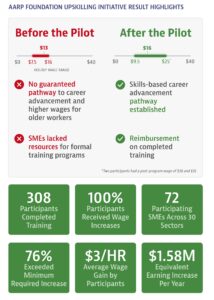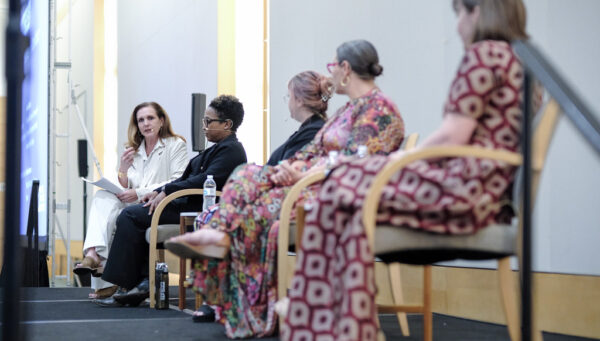Key Highlights
Challenges
In a time of technological change, workers need more training more frequently. Small and medium-sized enterprises, which account for almost half of U.S. private sector jobs, often lack the resources to provide formal training programs to their employees. Older workers constitute one-third of the workforce, but they are often excluded from corporate training programs. Training opportunities are particularly scarce for low-income older workers.
Opportunities
Businesses believe that job-related training is the most promising strategy for remaining competitive. Companies that invest in upskilling report increased productivity and improved employee retention, and in a national survey, more than one-third of workers who participated in an upskilling program with their current employer reported career advancement.
AARP Foundation’s Upskilling Initiative focused on low-income older employees and provided reimbursement for training funds in exchange for a guaranteed hourly wage increase for program participants. In this pilot, 72 SMEs offered upskilling to more than 300 low-wage older workers. Three-quarters of participants reported receiving a pay hike that was higher than the minimum required. In other words, providing training funds to employers as an incentive to providing wage gains led directly to tangible financial benefits for the workers.

Findings and Next Steps
- This program design was well received by SME employers, who viewed it as valuable for all of their low-wage employees because the businesses were best positioned to determine what skills they should teach. However, some SMEs did need advice and guidance in identifying workforce training needs.
- Additional research is needed to understand the long-term impact of upskilling for this population. Determining long-term benefits could reinforce the case for investing in upskilling opportunities for older workers.


